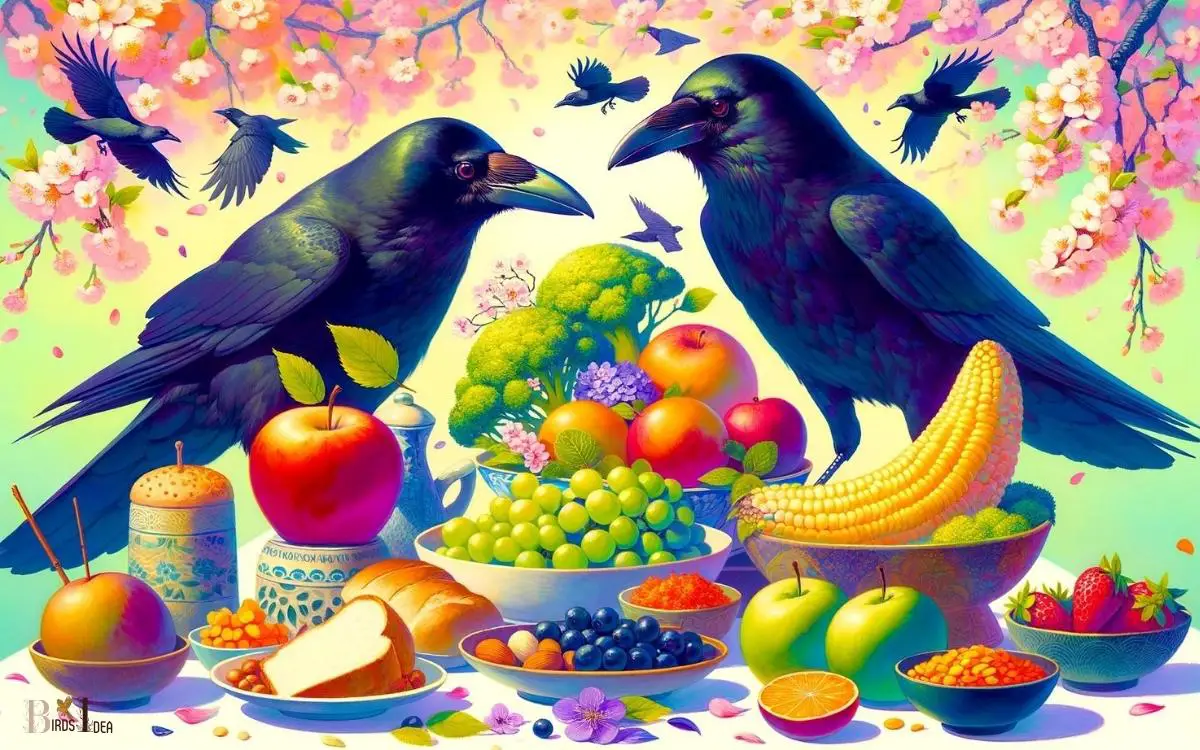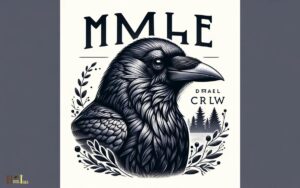What Do Crows Eat in Spring? Insects, Seeds, Fruits!
Crows are omnivorous birds that adapt their diet with the changing seasons. In spring, crows predominantly eat a variety of foods including insects, earthworms, seeds, fruits, small mammals, and carrion.
With the thawing of the ground and blooming of plants, crows take advantage of the newly available food sources, making the most of the nutritional bounty spring provides.
During spring, crows’ diet expands due to the increased availability of food items. Here are some key components of their diet during this season:
- Insects: They consume a wide range of insects, which are abundant in spring.
- Earthworms: As the soil thaws, earthworms become more accessible and are a favored food source.
- Seeds and Fruits: Crows eat seeds from various plants and trees, as well as fruits that start to ripen.
- Small Mammals: Rodents and other small mammals are preyed upon, especially when other food sources are scarce.
- Carrion: They continue to scavenge on carcasses, which provide a high-protein meal.
Their foraging behavior is also influenced by the proximity of human populations, as crows are known to exploit food waste and leftovers from human activities. Crows’ adaptability in diet reflects their intelligence and survival strategies.
As spring breathes life into the natural world, crows adjust their foraging tactics to ensure a varied and nutritious diet, essential for their well-being during the breeding season.

Key Takeaway
Insect Diet of Crows
In spring, crows primarily feed on the insect diet, consisting of a variety of beetles, caterpillars, grasshoppers, and other small invertebrates.
This period marks an important phase in the crow’s annual feeding cycle, as the availability of these insects increases due to the warmer weather and the flourishing of plant life.
Crows are known to forage extensively for these invertebrates, often using their keen eyesight to spot potential prey from a distance.
Once located, they employ their remarkable intelligence and agility to capture the insects, demonstrating impressive dexterity and precision in their hunting techniques.
The consumption of this insect-rich diet provides crows with essential nutrients and energy, enabling them to thrive during the demanding reproductive and nesting activities that characterize the spring season.
Fruit Preferences of Crows
During the spring season, crows exhibit a preference for a diverse array of fruits, supplementing their insect diet with offerings such as berries, apples, and cherries.
Crows are particularly drawn to the sweet, juicy flesh of ripe berries, relishing the burst of flavor as they pluck them from branches.
The crisp texture and succulent taste of apples also entice crows, providing a refreshing and hydrating snack during the warmer months.
The luscious, slightly tart flavor of cherries appeals to the discerning palates of these intelligent birds, offering a satisfying and nourishing treat.
Witnessing crows indulging in these fruits can evoke a sense of joy and wonder, as their enjoyment of nature’s bounties mirrors our own appreciation for the simple pleasures of life.
Seed Consumption by Crows
Crows’ consumption of seeds increases significantly during the spring months as they seek out a variety of nutritious options to supplement their diet.
During this time, crows display a preference for a diverse range of seeds, including grains such as corn, wheat, and barley, as well as small seeds from plants like sunflowers and thistles.
They are also known to consume seeds from trees such as oak, pine, and spruce. Crows’ foraging behavior during spring is driven by the need to obtain essential nutrients, including carbohydrates, proteins, and fats, to support their breeding activities and molting process.
The availability of seeds in the spring coincides with the abundance of certain plant species, providing crows with ample opportunities to fulfill their dietary requirements.
Small Mammals in the Crow Diet
The spring diet of crows also includes small mammals, reflecting their diverse foraging behavior to meet essential nutrient requirements during this season.
Small mammals such as mice, voles, and squirrels form a crucial part of the crow’s diet during spring.
These highly intelligent birds are adept hunters, using their sharp beaks and agile movements to catch these elusive prey.
The sight of a crow swooping down to catch a mouse or chasing a squirrel through the trees showcases their remarkable hunting abilities.
Witnessing these interactions between crows and small mammals can evoke a sense of awe and admiration for the resourcefulness and adaptability of these birds in their quest for sustenance.
The interplay between predator and prey in the natural world reminds us of the intricate balance of life and the resilience of these remarkable creatures.
Moving forward, let’s delve into the impact of human habitation on the crow diet.
Impact of Human Habitation on Crow Diet
An analysis of the crow diet in spring reveals the significant impact of human habitation on their feeding patterns and food sources.
As urbanization continues to encroach upon natural habitats, crows have adapted their diet to include a wide variety of human-derived food sources.
The table below illustrates the diverse array of human-related items that crows have been observed consuming in urban and suburban environments.
| Food Source | Observations |
|---|---|
| Fast food scraps | Crows often scavenge discarded fast food items. |
| Garden produce | Crows consume fruits and vegetables from gardens. |
| Waste from bins | They forage through trash for edible items. |
| Pet food | Crows have been seen eating from pet food bowls. |
This shift in dietary behavior demonstrates the remarkable adaptability of crows in response to human habitation, highlighting the complex interplay between wildlife and urban ecosystems.
Conclusion
The spring diet of crows is diverse and adaptable, resembling a well-stocked buffet table. From feasting on insects and fruits to consuming seeds and small mammals, crows display a remarkable ability to thrive in various environments.
However, the impact of human habitation on their diet highlights the need for conservation efforts to ensure the availability of natural food sources for these intelligent and resourceful birds.






